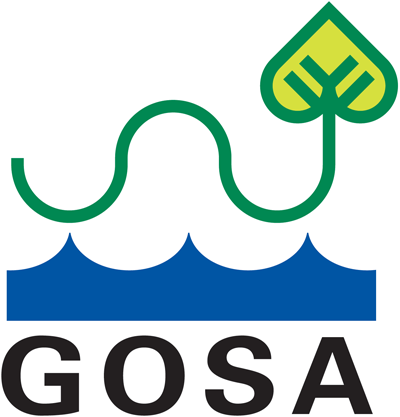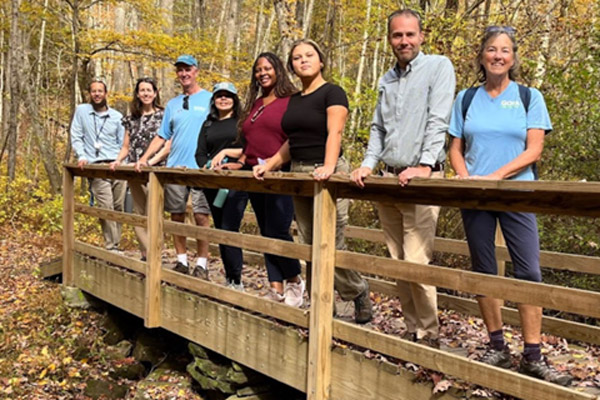by Syma Ebbin
 I’m preaching to the choir here, I know. You all love exploring open, undeveloped areas, poking around wetlands and marshes, spotting birds and other wildlife as you traipse down the trail or hunker down with your scope or camera hoping for a glimpse of a rare or unusual species (or most likely you wouldn’t be reading this article or newsletter). We all intuitively understand that open space is valuable. How could it not be? But compared with all the other competing and often more economically remunerative uses of land, how does that open space fare? How can we adequately place a value on a parcel of open space so that it can fairly compete with the value of a developed parcel?
I’m preaching to the choir here, I know. You all love exploring open, undeveloped areas, poking around wetlands and marshes, spotting birds and other wildlife as you traipse down the trail or hunker down with your scope or camera hoping for a glimpse of a rare or unusual species (or most likely you wouldn’t be reading this article or newsletter). We all intuitively understand that open space is valuable. How could it not be? But compared with all the other competing and often more economically remunerative uses of land, how does that open space fare? How can we adequately place a value on a parcel of open space so that it can fairly compete with the value of a developed parcel?
The fact is, our society’s emphasis on the market economy means that we tend to overlook and undervalue (or worse yet, value not at all) many of the services generated by our open spaces. Our environment supplies many resources and services; however, we focus mostly on those we commodify. We place dollar values on recreationally and commercially important fish species, agricultural crops we cultivate for food, trees we harvest for timber, land we clear for development, and petroleum deposits we extract for energy. But what about the soil that infiltrates and filters the rainwater, the marshes that absorb the wave energy of a winter storm and dissipate flood waters, the photosynthetic organisms that produce the oxygen we breathe, the insects that pollinate the crops we eat, the trees that stabilize soil and prevent erosion? The list of environmental services that we depend upon goes on and on.
Sometimes we don’t know the value of these services until they are degraded and we’re forced to replace these functions with engineered solutions. New York City experienced this situation several years ago when the Environmental Protection Agency informed the city that to maintain the quality of their drinking water supply they would have to build a filtration plant, with an estimated price tag of $6 billion. The problem was that the Catskill/Delaware watershed supplying New York City’s drinking water was being threatened by development. So to avoid the cost of the filtration plant, the City set about acquiring undeveloped lands for watershed protection, creating vegetated riparian buffers along rivers and waterways, improving septic and sewage systems and providing incentives for towns, farmers and residents within the watersheds to adopt best management practices. The city was able to maintain the historically high quality of its drinking water by simply protecting and fostering better management of watershed lands with an investment on the order of $1 to 1.5 billion.
Helping to calculate the economic value of these ecosystem services has been Dr. Robert Costanza, now affiliated with Portland State University. Costanza’s seminal 1997 study reported in the journal Nature estimated that, at a conservative minimum, the contribution of the world’s ecological services averages about $33 trillion per year with a range of $16 to 54 trillion, far exceeding the U.S. gross domestic product of $18 trillion. His more focused 2006 study estimated that the value of New Jersey’s ecosystems generate over $19 billion a year, roughly on a par with the state’s construction sector. Of this, forested areas were found to contribute $2.2 billion per year, not including the value of timber on those lands. The habitat services associated with these areas were found to have the largest value, including their role in water supply, pollination, and providing aesthetic and recreational amenities. Wetlands, in their roles in disturbance regulation, water infiltration and supply, and waste treatment, contributed the largest economic value of ecosystem services, contributing $9.4 billion and $1.2 billion for fresh and saltwater wetlands respectively.
A 2011 study of the economic impact of Connecticut’s parks, forests and natural resources conducted by UConn’s Connecticut Center for Economic Analysis found that residents and out-of-state tourists who visit these areas and engage in activities such as hiking, fishing, hunting, camping, skiing, and recreational boating generate $427 million through permits and park fees, as well as $544 million in general tourist expenditures. State residents who live in houses overlooking state-protected lands derive approximately $270 million each year in amenity values. The assessed values of these homes generate $3.1 to $5.4 million in government revenues without accounting for the scenic vistas supplied by their proximity to the state open-space lands. A more complete assessment of the amenity values associated with their location could significantly increase property tax revenues for municipalities. Finally, the report estimates that the individuals who visit these parks derive benefits that enhance their well-being and quality of life in excess of their expenses, generating $272 million in consumer surpluses.
These are stunning values for the state as a whole, but what about the local picture? A common way to assess the fiscal impact of development versus open-space preservation is to calculate the cost-of-community-service ratio for different types of land uses: residential, industrial/commercial and open space/farmland. The ratio compares the cost of community services to the amount of revenues collected. Research investigating the cost of community services in different areas has confirmed that open space generates more revenues than it requires in services, with values ranging from .3 to .5. On the other hand, residential parcels create a net drain on municipal budgets, using more services than they generate in tax revenues, with ratios ranging from 1.15 to 1.50. This indicates that for every dollar of taxes generated by residential parcels, they use between $1.15 and $1.50 in municipal services.
In addition to this, open space enhances the property values of surrounding parcels, and these greater values are captured in higher assessments, which then generate more tax revenues from these adjacent and nearby parcels. The economic value of these environmental amenities such as open space can be measured using hedonic methods of analysis¹. An evaluation of the development of Central Park in New York City provides empirical evidence to support this. Annual reports produced by the Central Park Commissioners noted substantial changes in land values occurring after the park was formed. In 1873, the Commissioners reported that after paying $830,000 for the land and construction of the park, the city received a net profit of $4.4 million from increased tax revenues attributable to the park’s existence.
Environmental amenities also have an impact on a town or region’s overall economy. In Seattle, this is known as the “Mount Rainier Effect”, where the existence of scenic vistas, access to recreational opportunities and natural amenities influences people and businesses alike to migrate to and locate in the area, thereby jump-starting the local economy. Thus, places with natural beauty become economically desirable places to live and do business. This effect is both synergistic and creates a positive feedback loop, thereby enhancing the economic draw these places have. It must also be noted that the opposite effect can also occur: incompatible or degrading land uses can drive down the values and tax assessments of nearby properties.
So, the next time you take a stroll in the woods, pause a moment to appreciate the many ways this undeveloped spot on earth is enhancing your own well-being, physically, spiritually, and yes, even economically.
¹Hedonic analysis is a methodology that is used to estimate the value that a given characteristic contributes to the overall value of a good. In this case, the sale prices of homes with similar features but different locations can be compared to gain an understanding of the value of location attributes (e.g., proximity to open space, water features, scenic vistas, etc.) to the aggregate house value.

